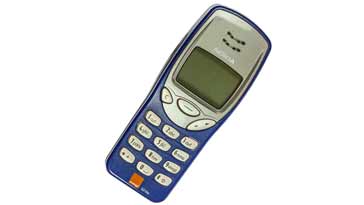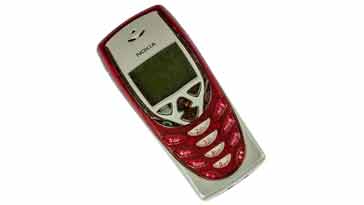GSM Logical, Physical, Broadcast, Control & Traffic Channels
The data within GSM is structured by grouping it into channels according its purpose, in this way it can be handled more easily with channels including SACCH, SDCCH, FACCH, etc.
GSM primer includes:
GSM introduction
Network architecture
Network interfaces
RF interface / slot & burst
GSM frames
Power classes & control
Channels
Audio codecs / vocoders
Handover
GSM uses a variety of 'channels' in which the data is carried. These channels are used to structure the data being carried for different purposes.
Although it may appear to be confusing at first, creating these channels greatly simplifies and structures the data being sent.

These channels are given a variety of names and abbreviations, everything from SACCH to SDCCH and FACCH to TCH.
Rationale behind use of channels
The channels used within GSM and other mobile communications or wireless communications systems can become a bit confusing. There are the RF or signal frequency channels. These are used to define at what frequency the radio signal is transmitted. These RF channels are discussed elsewhere.
However, it is necessary to organise the data being sent into a specific format and this is done using data channels.
The Global System for Mobile Communications, GSM sends a lot of data to and from the mobile phones. Typically each piece of data is very short.
Although it would be possible to have a different radio frequency channel for each type of data, this would be a very inefficient way of segregating the data.
Instead the data can all be carried over the same radio frequency signal, but they can be sorted into different messages that can be sent. These messages are tagged in a way that the system or mobile knows what they are.
Although there is an overhead with this because the messages all need to ahve labels, it is still far more efficient and effective than using a different radio frequency signal or channel for each type of data.
Definitions of data channel types.
There are many types of data channels that are used. Often these appear under different headings to indicate the type of channel and what sort of data they are used to carry.
These definitions may be used to categorise them, or they can just be used to indicate more about them.
One of the first definitions is to define the physical and logical channels that are carried over the GSM system.
Physical channels: The physical channels are determined by the fact that they have a particular position within the time-slot. In this way, they are physical, adopting a particular position within the signal. It can be further summarised by saying that several recurring time-slots on a carrier constitute a physical channel.
Logical channels: The logical channels are contained within the physical channels
The channels can also be defined by the purpose they perform. They can be grouped according to their function.
Broadcast channels: The broadcast channels are channels which provide data to all mobiles to enable them to provide tasks such as registering and the like.
Control channels: Control channels are those which give commands that are needed for the operation of the link, etc.
Traffic channels: Traffic channels are those which carry the payload data.
Another way in which the channels are described is as common channels or dedicated channels.
Common channels: These channels are accessible by all users, i.e. they are common to all users.
Dedicated channels: The dedicated channels are those that are dedicated to a particular user and not accessible by others.
These are all aways in which channels can be described. There are overlaps between them as they are descriptions that apply to different aspects of the channels.

Control channels
As the name indicates, the control channels are used in various ways to control the link.
There are three main types of control channel, namely broadcast control channels, common control channels, and dedicated control channels.
These types of control channel will be addressed in turn.
1) Broadcast channels
These broadcast channels are intended to be seen by mobiles that are enteringt he network. They provide an initial point of entry.
Frequency Control CHannel - FCCH: The Frequency Correction Channel is a broadcast channel used by the base stations. It acts as a beacon within the control channel and the mobile will first search for this when trying to access a base station.
The burst provided by the FCCH is first logical channel int he control sequence. It consists of a string of 48 zeros and when transmitted on GMSK, it manifests itself as a sine wave at a specific frequency - in the case of GSM it appears at a frequency of 67.7 kHz.
The FCCH is sent in the first time slot, and the mobile can wait for seven time slots and then expect the first slot of the second frame which is the synchronisation channel.
Synchronisation CHannel - SCH: The Synchronisation Channel is a downlink broadcast channel, i.e. sent by the base stations. The SCH provides information to the mobile phones needed to search for base stations, identify them and synchronise with them.
The SCH has a unique burst structure, as does the BCCH, but it sends a training sequence that is the same through all GSM networks and it allows the mobile to gain exact synchronisation. Also included within the SCH is the BSIC and the current frame location in relation to the hyperframe.
Broadcast Control CHannel - BCCH : The Broadcast Control Channel is a logical broadcast channel that is used by the basestation to send information about the identity of the network. This information is used by a mobile station to get access to the network. Essentially it contains all the parameters used by all mobiles in the cell to set up and receive calls. This can include the access parameters and configurations required. One broadcast control channel segment occupies four frames per multiframe.
2) Common control channels
Common Control Channels support common procedures required to establish a dedicated link with the Global System for Mobile Communications network.
Paging Channel - PCH: The paging channel is used to inform the mobile that it has an incoming call.
PCHs can also be organised to allow for a sleep mode - this will save battery life. To achieve this the mobile can be given a specific group of PCHs to monitor and it will awake just in time to receive them and check if the mobile is being paged.
Access Grant CHannel - AGCH: After the PCH has informed the mobile that it has an incoming call, the mobile needs to be directed to a form of control channel called the Standalone Dedicated Control CHannel, SDCCH.
Random Access CHannel - RACH: This channel originates from the mobile. It is sued when a mobile wants to make a call. To achieve this it needs to gain access to the base station to tell it that it wants to originate a call.
3) Dedicated control channels
Standalone Dedicated Control CHannel - SDCCH : The SDCCH is a two way logical channel that consists of four time slots in every multiframe. Each mobile on the network is assigned to one of these channels.
Although the make-up of the SDCCH results in slow data transmission speeds, it is nevertheless sufficient for the information that needs to be sent.
The SDCCH is used for carrying most of the access messaging and it is associated with an SACCH to relay signalling information
Slow Associated Control Channel - SACCH: The SACCH is a signalling channel that provides a relatively slow signalling connection. The SACCH is associated with either a traffic or dedicated channel.
Although originally intended for engineering communications, the SACCH soon became the bearer for SMS, Short Message Service transfers.
Traffic channels
Apart from the control, it is also very important to carry the payload data as well. Once the link has been set up using the control channels, then the payload data including speech or other data can be sent in both the uplink and downlink directions.
Even though the link has been set up, the control data will stil be required to ensure that any changes in the link can be reflected in the way it operates. Handover, changes in signal strength and the like all need to be accommodated.
GSM has two types of traffic channels TCH/FS and TCH/HS and these are used in both the uplink and downlink. These channels use a 26 frame multi frame structure.
Traffic CHannel / Full Speed - TCH/FS: The TCH/FS carries full rate digitised speech at 13kbps data rate. After the channel coding had been applied the overall rate increased to 22.8kbps.
There were also channels called TCH/F9.6, TCH/F4.8 and TCH/F2.4 that were used to carry data at a speed of 9.6kbps,4.8kbps and 2.4kbps respectively. All these channels after channel coding was applied is were transmitted at a data rate of 22.8kbps.
Traffic CHannel/Half Speed - TCH/HS: This channel was defined to enable half rate speech data to be carried. The advantage of this was to enable two GSM calls to be supported on the same slot, and thereby increasing the capacity of the cell.
There are many types of data that are used within a GSM wireless communications system. The channels enable an orderly transfer of data so that the receiving end of the link understands what the data is and what it is to be used for.
 Written by Ian Poole .
Written by Ian Poole .
Experienced electronics engineer and author.
Wireless & Wired Connectivity Topics:
Mobile Communications basics
2G GSM
3G UMTS
4G LTE
5G
Wi-Fi
Bluetooth
IEEE 802.15.4
DECT cordless phones
Networking fundamentals
What is the Cloud
Ethernet
Serial data
USB
LoRa
VoIP
SDN
NFV
SD-WAN
Return to Wireless & Wired Connectivity


